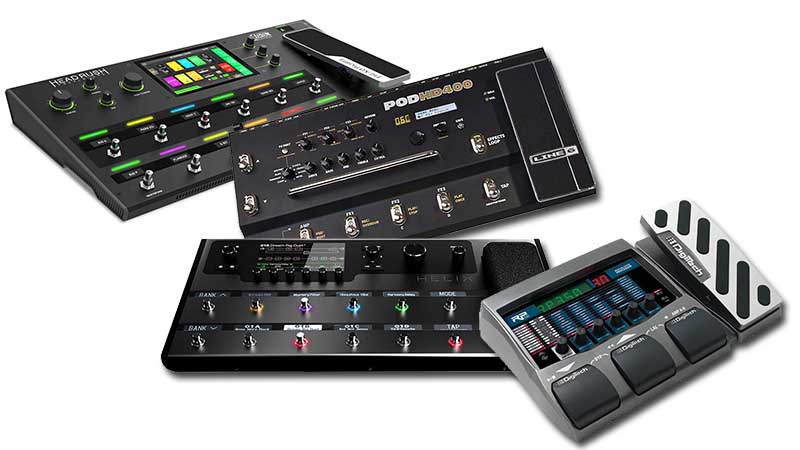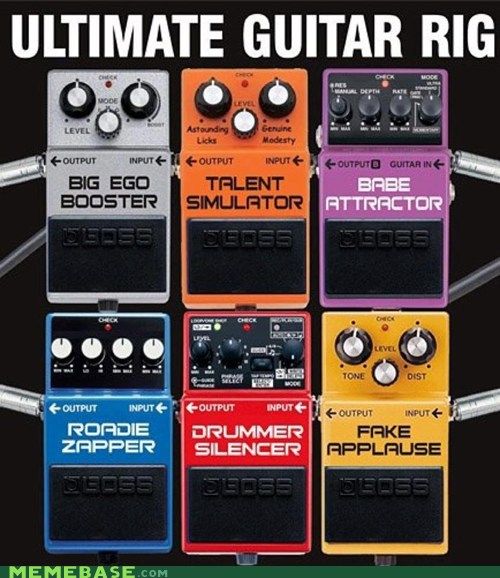Which Guitar Pedal to buy first? Don't make the wrong buying decision due to these 3 common mistakes
.jpg)
Guitar pedals are such personal things. We love the sounds they produce, but effects pedals are usually third on the list to purchase (quite rightly) behind guitar and amplifier. By the time we consider pedals our budget is usually stretched - which type should you prioritise buying first?
The always-on effect for guitarists is reverb. This is the sound that emulates sound reflections from playing in a large hall. All guitars in all genres sound too 'dry' without reverb, but do you need a pedal for reverb? You should only buy a guitar amplifier that has reverb built-in, this is nearly always more then adequate quality wise. It's only when you want more exotic forms of reverb (spring, plate etc.) you'll need a pedal.
What's next? It depends on what you want to do. Here is a list of possible pedal choices...
Effects Types and Effects Chains

Effects can be ‘chained’ together to sculpture tones and sounds with almost infinite permutations.
Here is a list and the common placement order for creating great effects chains…
- Dynamics compressors, filters (e.g., wah, pitch shifters), and volume pedals generally are placed at the beginning of the signal chain. Alternatively, you can place volume pedals at the end of the signal chain to providea slight variance in functionality.
- Gain-based effects (e.g., overdrive/distortion, fuzz) usually come next.
- Equalization (EQ) is often used to shape the tonal characteristics of overdrive/distortion and fuzz effects, so put an EQ after them. Alternatively, place it before them to shape the guitar’s general tone, cutting unwanted frequencies before the gain pedals.
- Modulation effects like flangers, phasers, and chorus are typically placed next.
- Time-based effects like delays, tremolo, and reverbs are generally placed near the end of the signal chain.
- Modelling pedals amp and cab are often placed at the very end of the signal chain.
Wow, that's a long list! So which from this multitude of effects are vital and which are not? It depends...
Try not to go down the rabbit hole with the more esoteric pedals. Remember your fundamental choices (in no particular order) are…
- Budget
- Tone
- Sound quality
Know Your Sound

The only thing you can say for sure when looking for a guitar pedal is that first you should define your target sound and learn how to create it. One of my fave lead sounds requires two reverbs, ping pong delay, and a bit of compression.
Define your sound then look for hardware, a pedal (or pedals) to achieve it.
For lead guitarists of any genre I would argue the first choice is gain based effects and the winner there is an overdrive. The clue's in the name, it livens up your sound and cuts through the mix when you solo.
For rhythm players 'clean channel' effects like Modulation and Time based effects will be more important.
Tone-v-Sound
It’s easy to conflate tone with sound. You can dial in effects with guitar pedals that alter your sound. For instance, you can change your sound by adding dynamic based effects (wah/pitch), gain based effects (OD/fuzz) and of course EQ. Your tone gets affected, but as a by-product of the sound algorithm.
Time based effects like delays don’t actually alter your tone but can sculpt a sound. For example, guitarists like U2’s guitarist, The Edge, whose trademark ambient sound is delay. Specifically he uses a Korg SDD-3000 with Delay Time: 440ms, Feedback: 3, Filter Low: 250Hz, Filter High: 4kHz, Modulation Waveform: Triangle, Intensity: 1.5, Frequency: 6, Level Balance: 5)
Guitar Pedal Basic Choices
The basic choice is between…
- a pedal board with multiple separate effects pedals (often called stomp boxes)
- a multi pedal which contains everything in one package that is invariably a lot neater, though perhaps the effects are a little more generic.
The pedal board is messier and probably more prone to connection failures. A pedal board is also bigger and more cumbersome to deploy and carry around, especially if you're touring the world.
A multi pedal is more compact but might have stuff you don’t need – if you use a guitar amp then you don’t need to pay for amp and cab modelling which is 90% of a multi pedal.
As a general rule you can’t beat high end specialized pedals that do just one thing well – but expect to pay a premium.
Each pedal, multi or stomp, has its own sound. There are infinite possibilities.
The bottom line about pedals is you only really need a rocky lead sound that will cut through and a clean sound for rhythm. It is very rare that a band will give you the opportunity to feature more exotic delay pedals with nuanced sound effects chains.
Where to plug in in a guitar pedal
There are two points you can inject an effects chain…
- Between the guitar and the amplifier – plugging it directly in
- If you have an amp with an effects loop you can introduce effects after the amps pre-amp and before the power amp stage.
You can, of course, combine the two e.g. an overdrive before the pre-amp and cleaner effects in the effects loop
Warning: The biggest culprit that kills tone is usually over-processing i.e. adding too many effects
Store-v-Online
I don’t buy pedals instore. I try them out there but your credit card gives you greater consumer rights to return something that you later change your mind about by purchasing online. In exercising those consumer rights some companies that you deal with will make it downright difficult for you to return goods, so only buy from a sympathetic dealer even if they charge a bit more. Gone are the days when you could build a relationship with dealer, you choose the store with the best protocols, so do some due diligence and read their terms and conditions page.
Where to get further advice
I'm only just scratching the surface. I hope this has been useful and you now know the type of pedal that's right for you. That's the easy part! Now you need to decide make and model.
The pedal show on YouTube is the go-to place to learn about guitar pedal brands. It is strangely addictive, and I’ve watched hours (so you don’t have to). At the end of the day, it’s just opinion.
They do some interesting ‘shootouts’ but remember, you are hearing not just the pedal, you are hearing it through the filter of your audio device and whatever they are plugged into. You are not hearing what it sounds like with your guitar and your amplifier.
Conclusion
Take all advice (even mine) with a pinch of salt. Don’t confuse tone with sound. If in doubt, less is more when applying guitar effects. Let me know if something else works for you that I haven’t mentioned.
I take the minimalist approach. After all, how many sounds do you need? The average song requires kicking on one effect perhaps. Like I say, it’s rare the average band allows you to showcase all those subtle reverbs.
There’s only one must-have guitar pedal – an overdrive, to give you a boost in the mix when you solo.
Remember, many effects will not be discernible to the average listener so weight your budget towards a great overdrive first. If I had to choose one pedal it would be the Strymon Sunset OverDrive which is a quality pedal in the top of the OD pedal price spectrum.
The only other must-have effect is reverb, which is why I recommend here and elsewhere you only buy an amp that has reverb built in.

